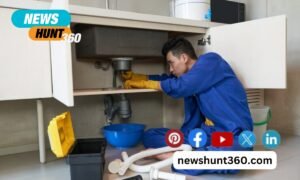A roof inspection is an essential element of buying or selling a home and general day-to-day life. Generally speaking, a professional roof inspector will be looking for leaks, unusual wear and tear, damage caused by windblown debris, organic growth issues, and more. They will assess if repairs are needed or if any areas need repair.
How is a roof inspection performed?
Typically roof inspectors assess the roof up close by climbing up to see what issues may be arising. They use ladders or equipment to take a look. It can take up to an hour to assess, but new methods are approaching fast in modern times. After all, climbing up onto roofs can be dangerous and pose massive health and safety risks. You should not attempt to do this yourself. Walking on a roof can be learned and is reserved for professionals. However, you can make a few checks by inspecting the condition of your roof visually. The signs of degradation that an inspector should address are:
- Degraded roofing: tiles that are broken, missing, covered with moss, or which are no longer in their original place;
- A roof outlet from a chimney, the masonry of which seems to be deteriorating;
- The ridgeline which no longer appears to be rectilinear;
- A gutter that has oxidation points or is clogged due to the development of foam.
Checking the condition of your roof by spotting these problems will allow you to anticipate other more serious degradations and preserve its insulation, an important point to avoid heat or cooled air loss in particular.
Overall, your roof inspector will look for damage, wear or vegetation growth both on the exterior of your roof and in the attic or interior ceiling. Wind, water, and mould can damage all parts of your roof because it is exposed to the elements. A building inspector will consider whether the roofing materials are damaged, missing, or loose, including roof tiles and ridge caps. In particular, they look for signs of sagging, water damage, mould, and tile heaving. Next, they will inspect the gutter and downpipe system. This means making sure that water is draining properly from your roof instead of collecting in certain areas. This defect creates the perfect environment for termites.
For the gutters and downpipes, the presence of blockages and any sagging or curvature is checked. The inspector will also check for the presence of rotting or damage caused by pests and sealing.
The inspector also takes a look inside the roof. The roof space or ceilings are inspected for water damage or leaks. Water leaks can lead to rotting or mould growth in your home, which could turn into expensive repairs. Leaks are also a sign of more significant problems with your roof’s insulation, whether it’s with the roof tiles or the underlayment.
Drones for inspection
So you may have wondered, how does an inspector check the roof if it’s unsafe to do so? What happens if there are defects that go unseen? Well, modern technology has paved the way for drones to aid in the job when deemed unsafe or with any roof inspection. They are specially developed for the requirements of professionals such as building and pest inspectors. Building inspectors can perform checks easier, faster, and more cost-effectively than in the traditional way.
A drone roof inspection means that inspectors can check the roof even at great heights or with complex roof geometry. Not everyone can fly the drone required for this task. A drone ‘pilot’ license is required. The Queensland Government has information about drones in Business. Check with your government department for information, and make sure you ask your inspector to view their license. With practice, the building inspector can steer the drone to the nearest centimetre to a gutter to take a critical look inside or precisely check connection areas.
A drone roof inspection allows the inspector to receive the recorded data in real-time. The data is saved for later processing and can be transferred to a computer. Drone inspections provide peace of mind to home buyers, knowing that the entire property is inspected. It truly is a great tool and is becoming more popular.
The flying roof inspector, also known as the drone, can be used in the following ways:
- The early detection of damage to existing roofs and other structural elements in the roof area.
- Documentation of individual work steps accompanying construction work on the roof.
- Damage diagnosis after an event – e.g. storm or hail (also for complete documentation to the insurance company).
- For planning purposes (e.g. renovation, conversion, expansion).
Drones are a versatile tool that makes building inspectors work more accessible and provides confidence to home buyers. This way, being able to carry out a roof inspection adds another layer of security to a home buying transaction when a roof inspection would have otherwise not gone ahead.




